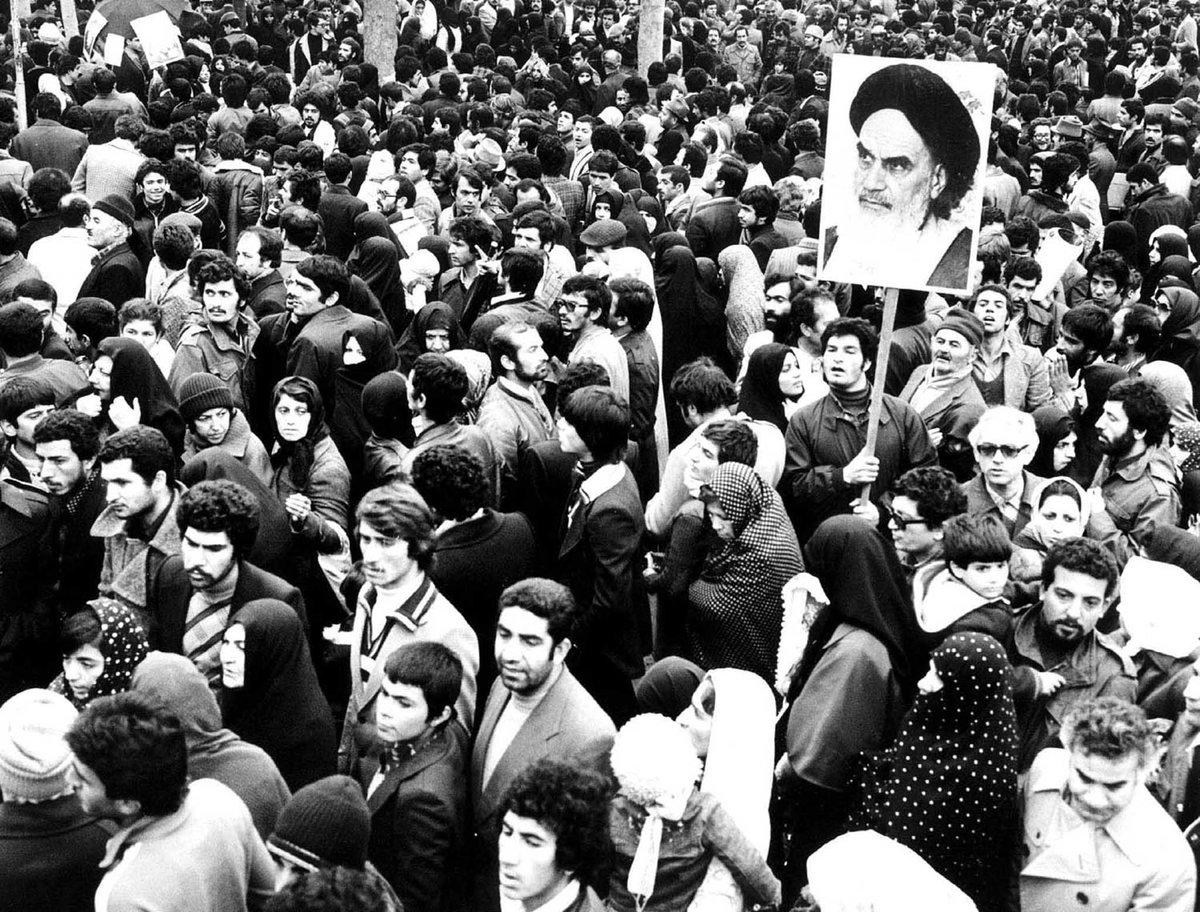
On January 3, 2020, a US drone strike killed Iranian major general Qasem Soleimani—the second most powerful man in Iran after Supreme Leader Ali Khamenei—near the Baghdad International Airport in Iraq.
Who was this man, and why had the US deemed him too dangerous to live?
Who was this man, and why had the US deemed him too dangerous to live?

Suleimani was born in Rabor, a poor village in the mountains of eastern Iran. Because of his family's poverty, he was forced from a young age to manual labour.
A young man with only a high school education, he eventually worked for the local municipal water department. And there Suleimani might have stayed, if not for the events of 1979.
In 1979, when Suleimani was 22, the Shah fell to a popular Islamic uprising led by Ayatollah Ruhollah Khomeini. Suleimani joined the Islamic Revolutionary Guard Corps (IRGC), a force established by Iran’s new clerical leadership to prevent the military from mounting a coup. 

Though he received very little training, Suleimani advanced rapidly through the IRGC. As a young guardsman, Suleimani was dispatched to northwestern Iran, where he helped crush an uprising by the Kurds.
Just 18 months after the revolution in Iran, Saddam Hussein sent Iraqi troops across the border into Iran, hoping to capitalize on the chaos of the new government, setting off the Iran-Iraq War. Suleimani was given the simple task of bringing water to soldiers on the front lines 

After completing this 15-day mission, Suleimani did not leave the front lines, but undertook several reconnaissance missions across enemy lines, often returning with his signature prize: a goat.
(Suleimani did this so often, that Iraqi radio dubbed him, "the goat thief.")
The Iran-Iraq War was long, embittered, and bloody, but Suleimani emerged from the conflict as a respected leader and war hero.
Like many Iranians, Suleimani believed that much of the suffering from chemical warfare that Saddam Hussein inflicted on Iranian civilians and soldiers was ultimately the fault of western powers, particularly the US, who had allegedly helped build and supply the terrible weapons
Also like many Iranians, Suleimani emerged from the bloodbath of the Iran-Iraq war more inclined towards asymmetrical warfare than the direct confrontation of traditional war, using militias and other non-state actors to advance Iran's interest outside of Iran's soil.
The Quds force, one of five branches of the IRGC, was ideally placed to exert Iranian influence across the Middle East, and they had early partners in Lebanon's Hezbollah.
The Quds force wreaked havoc far beyond the region, however, orchestrating attacks as far as Buenos Aires at the Israeli Embassy (killing 29 people in 1992) and a Jewish Center (killing 85 people in 1994). 

In 1998, Suleimani took leadership of the Quds Force. With a base in the former U.S. Embassy compound in Tehran, the force has between ten thousand and twenty thousand members, divided between combatants and those who train and oversee foreign assets.
Over the next few decades, Suleimani skillfully built an Iranian axis of power, a bridge that gave it indirect control over four Arab capitals: Baghdad, Damascus, Beirut, and Sana’a (Yemen).
The IRGC Quds Force even crossed the Shia/Sunni divide to support militant groups like Hamas in the Palestinian territories, with the ultimate goal of "liberating Jerusalem" and destroying the Jewish state of Israel.
In 2002, in the State of the Union address, President George W. Bush named Iran as part of the "Axis of Evil." With regimes toppling in Afghanistan and Iraq, Iran was cautious to deal too strongly with the Americans, who were determined to slow or stop Iranian nuclear advancement
As the invasion of Iraq began to falter, and fear of Americans attacking Iran began to wane, Suleimani began to activate various Shia militias in Iraq to carry out revenge killings on the remanent of Saddam's Baathist party as well as attack American troops.
If there was any doubt about the source of the attacks, Suleimani wasn't shy in claiming responsibility. According to one Iraqi official, Suleimani sent the American command the following message after Israel withdrew from southern Lebanon in 2006:
“I hope you have been enjoying the peace and quiet in Baghdad,” it read. “I’ve been busy in Beirut!”
The Bush Administration, after considering designating Suleimani as an enemy combatant, settled on a terrorist designation, due to his leadership in the IRGC Quds Force and the increasing role they played in the conflict in Iraq.
Well into 2011, the proxy militia attacks continued with US coalition casualties. As the covert war with Iran intensified, American officials considered crossing into Iran to attack training camps and bomb factories, but they never did.
As the Arab spring began to spark, and the Assad regime in Syria began to teeter, Suleimani sprung to action. He could not lose his link between Iraq and Lebanon should Assad fall. Despite the Assad regimes use of chemical weapons, Suleimani was unrelenting in his support,
...turning the tide back from the rebels to the regime in Damascus.
The Obama Administration also considered Suleimani to be a terrorist, due to his deadly activity in Syria, as well as his participation in a thwarted assassination plot to kill the Saudi Ambassador on US soil.
In early October 2019, Suleimani was in Baghdad, consulting with militia commanders about increasing rocket attacks on US forces in Iraq. There had been several anti-Iran demonstrations across Iraq, and Suleimani wanted to appear strong and stop the erosion of support.
In late December, there was an attack on Iraqi K-1 Air Base that hosted Operation Inherent Resolve (Coalition against ISIS) forces. An Iraqi-American U.S. defence contractor was killed and multiple U.S. and Iraqi service members were killed.
On 29 December 2019, retaliatory U.S. airstrikes targeted five Kata'ib Hezbollah weapon storage facilities and command and control locations in Iraq and Syria. 25 militia members died and 55 were wounded.
On 31 December 2019, after the funerals, dozens of Iraqi Shia militiamen and their supporters marched into the Green Zone and surrounded the U.S. embassy compound. Dozens of the demonstrators then smashed through a main door of the checkpoint, set fire to the reception area, 

...raised Popular Mobilization Units militia flags, left anti-American posters, and sprayed anti-American graffiti. U.S. President Donald Trump accused Iran of orchestrating the attack on the embassy and added that they would be held "fully responsible".
Defense Secretary Mark T. Esper, who said the United States military would pre-emptively strike Iranian-backed forces in Iraq and Syria if there were signs the paramilitary groups were planning more attacks against American bases and personnel in the region.
“If we get word of attacks, we will take pre-emptive action as well to protect American forces, protect American lives,” Mr. Esper said. “The game has changed.”
On 3 January 2020, at 12:32 a.m. local time, Soleimani's Airbus A320 Cham Wings plane arrived at Baghdad International Airport from Damascus International Airport.
An MQ-9 Reaper drone of the U.S. Air Force and other military aircraft loitered above the area as Soleimani and other pro-Iranian paramilitary figures, including Abu Mahdi al-Muhandis, a U.S.-designated terrorist, departed the airport towards downtown Baghdad.
At 12:47 a.m., the Reaper drone launched several missiles, striking the convoy on an access road as it departed the airport, engulfing the two cars in flames and killing 10 people. 



In the aftermath of the strike, which the U.S. Department of Defense said was at the direction of the President to prevent imminent attacks, there was concern that the escalation in hostilities would lead to war.
Ayatollah Khamenei issued a statement calling for three days of public mourning and then retaliation.
“... forceful revenge awaits the criminals who have his blood and the blood of the other martyrs last night on their hands.”
“... forceful revenge awaits the criminals who have his blood and the blood of the other martyrs last night on their hands.”
It has now been a year since Suleimani has been killed. He was the architect of nearly every significant operation by Iranian intelligence and military forces over the past two decades, and his death brings a significant blow to the Iranian "Axis of Resistance."
As the anniversary is being marked, US and US allies such as Israel are on increased alert in the case of retaliatory attacks, but so far all is quiet.
-Further Reading/Bibliography-
"The Shadow Commander" by Dexter Filkins [newyorker.com/magazine/2013/…]
"The Shadow Commander" by Dexter Filkins [newyorker.com/magazine/2013/…]
"US Strike in Iraq Kills Qassam Suleimani" by Michael Crowley, Falih Hassan and Eric Schmitt [nytimes.com/2020/01/02/wor…]
"Assassination of Qasem Soleimani" Wikipedia [en.wikipedia.org/wiki/Assassina…]
• • •
Missing some Tweet in this thread? You can try to
force a refresh




